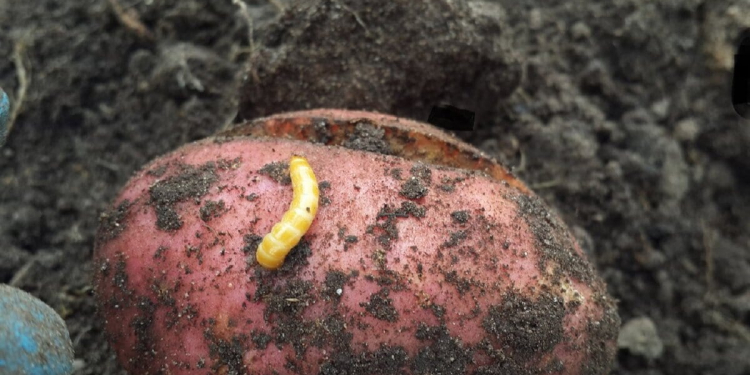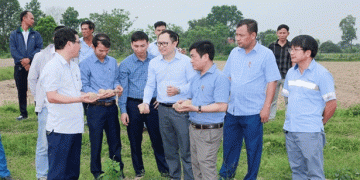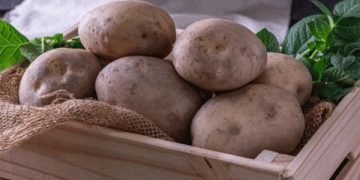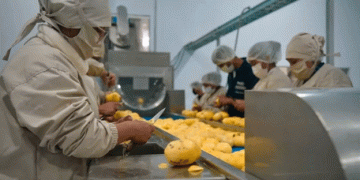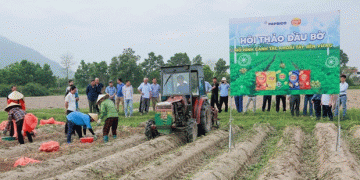The smaller package of resources and the drought of recent years mean that the pressure of wireworms is increasing rapidly. The problem is, among other things, in potato cultivation on torn grassland or on plots with remaining green manures. In the event of serious damage, the financial damage amounts to several thousand euros per hectare.
The yield of 8 hectares of our potato acreage has been rejected due to damage from wireworms. Here the level of infection was 15 percent or more. We have reduced the payment on some plots with less damage, ‘says arable farmer Mischa Raedts. ‘In addition, we spent a considerable amount on mostly biological pesticides that have little or no effect.’
Raedts estimates the total loss due to wireworms for this year at 75,000 euros. ‘That should at least be our profit,’ he concludes. The entrepreneur has an arable farm in partnership with his parents in Sevenum, Limburg. They grow a total of 100 hectares of potatoes, some of which are for sale as bantam. ‘It is precisely in the smaller tubers that the impact of damage from wireworms is even greater.’
5,000 euros per hectare
Arable farmer Jos Derks from Volkel, Brabant, has similar experiences with chips potatoes that he grows for Aviko. ‘If potatoes are rejected at the factory and only turn out to be suitable for flake processing, it will cost you 10 cents per kilo. Per hectare, the financial damage caused by wireworms will then simply amount to 5,000 euros, ‘Derks calculates.
Both Raedts and Derks note that the infestations by wireworms in particular, but also soil insects such as grubs and leatherjackets, have increased in recent years. Derks sees a relationship with the absence of harsh winters. ‘We exchange a lot of land with livestock farmers for potatoes and cultivation on cracked grassland is a risk in terms of these damage.’
Quest for moisture
In addition to the mild winters, Raedts points to the influence of the dry summers of recent years. ‘As of 2018, we will have more damage every year. It seems that wireworms are more likely to eat potatoes in their search for moisture during extreme drought. The biggest problem for us is that we have few options for effective control. We lack the right tools for this. ‘
The findings of both arable farmers are confirmed by crop advisor Jos Leenders of Agrifirm. ‘The disappearance of a number of effective products in particular, but also the choice of grass-green fertilizers has resulted in more pressure from wireworms in particular in recent years. This is clearly visible in the many bare patches in grasslands. ‘
Old and current resources
Leenders mentions Mocap, Condor and Dursban as examples of agents for combating wireworms that have already disappeared. ‘Of the current means, the effect of Vydate on soil insects, for example, is moderate and with Nemathorin, it is highly dependent on the availability of sufficient moisture at the right time.
Incidentally, the Syngenta agent Force Evo has been permitted in potatoes and maize from this year. This vapor action product specifically fights wireworms and not nematodes. According to the authorization holder, the test results are promising.
Types of grounds
Nationally, most damage from wireworms can be found on lighter soils, along plot edges or on sandheads, according to Leenders. ‘But my colleagues on the loess soils also report that the problem is getting worse. Clay soils are also less sensitive, but there too, damage to potatoes after cultivation on cracked grassland cannot be ruled out. ‘
Before Derks starts planting on under-treated grassland or a plot where green manure has been kept all winter, he takes samples. ‘It is good to know whether you can expect wireworms. Then at least you have the option to take measures during planting. There is certainly nothing you can do later in the season. ‘
Combating requires learning
Raedts says that last year he tried everything to combat wireworms together with a cultivation supervisor. ‘As far as permitted, we have deployed resources and invested heavily in them, but unfortunately without success. It still takes some learning to carry out a good fight. Timely irrigation plays an important role, but that is a difficult story for us. ‘
Because of the wireworms, the Limburg arable farmer is particularly concerned about the availability of land for potato cultivation in his region. ‘It is already not easy to get enough cultivation area together and these damage are only an additional obstacle.’
Large scaled research
In order to tackle the problems with soil insects, Leenders argues for more large-scale research. ‘We not only need better resources, but above all more knowledge and insight about these pest insects. The research must be taken up broadly, in which we learn to think integrally at the construction plan level, ‘he says.
‘I would like to know, for example, what the influence is of clearing a grass green manure plant before December 1 on the wireworm population. We want to gain more insight into such connections. ‘
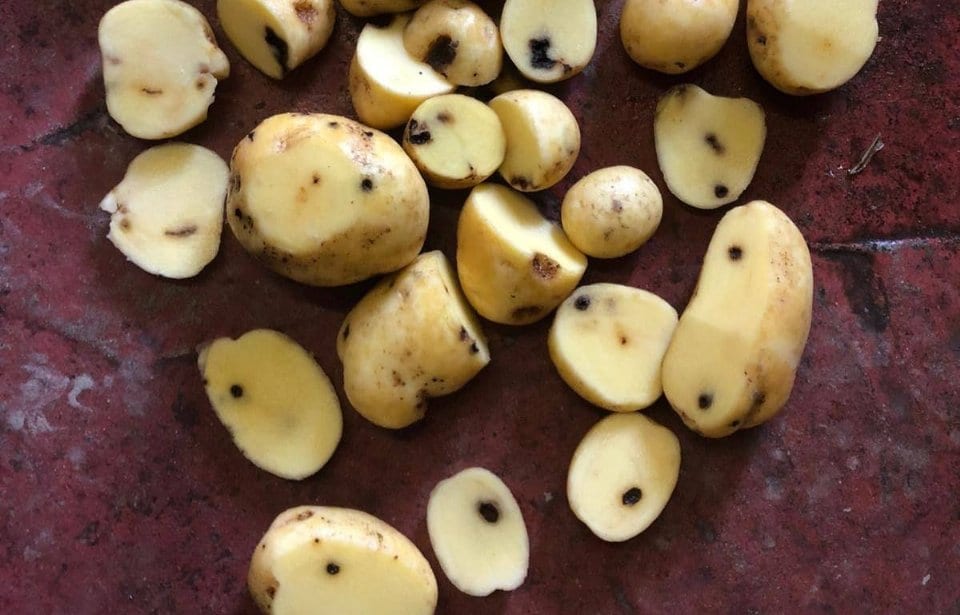
Click beetle has a life cycle of three to five years
Zip needles are also called copperworms. They are the larvae of click beetles that prefer to settle in crops such as grassland, grass seed and cereal crops. Worldwide 170 species of click beetles (Agriotes spp.) Are known. Two types of these are relevant for the Netherlands. The distinction between the different types of click beetles is based, among other things, on the degree of aggressiveness. A southern species with greater damage potential appears to be slowly advancing towards Northern Europe. On the website of bioKennisbank states that click beetles lay their eggs in the early spring on moist soils in dense crops. Zebra needles live in the soil for three to five years before pupating. The youngest larvae cause hardly any damage and feed on dead organic matter. From the second larval stage, the larvae grow to a length of 5 millimeters or more. Ultimately wireworms reach a length of more than 20 millimeters. Zipper needles cause the most damage in the spring and fall when the construction furrows are relatively moist. The damage caused by wireworms consists on the one hand of plant loss. This applies especially to cabbage, sugar beets and corn. In harvest fruits, there is mainly quality damage, because wireworms make holes and corridors. This mainly occurs with potatoes, but carrots can also be affected. In principle, the control of wireworms focuses on adult click beetles before the insects start to deposit eggs in the spring. In maize, control is also possible by the use of coated seed. Zip needles themselves can no longer be controlled during the growing season.
